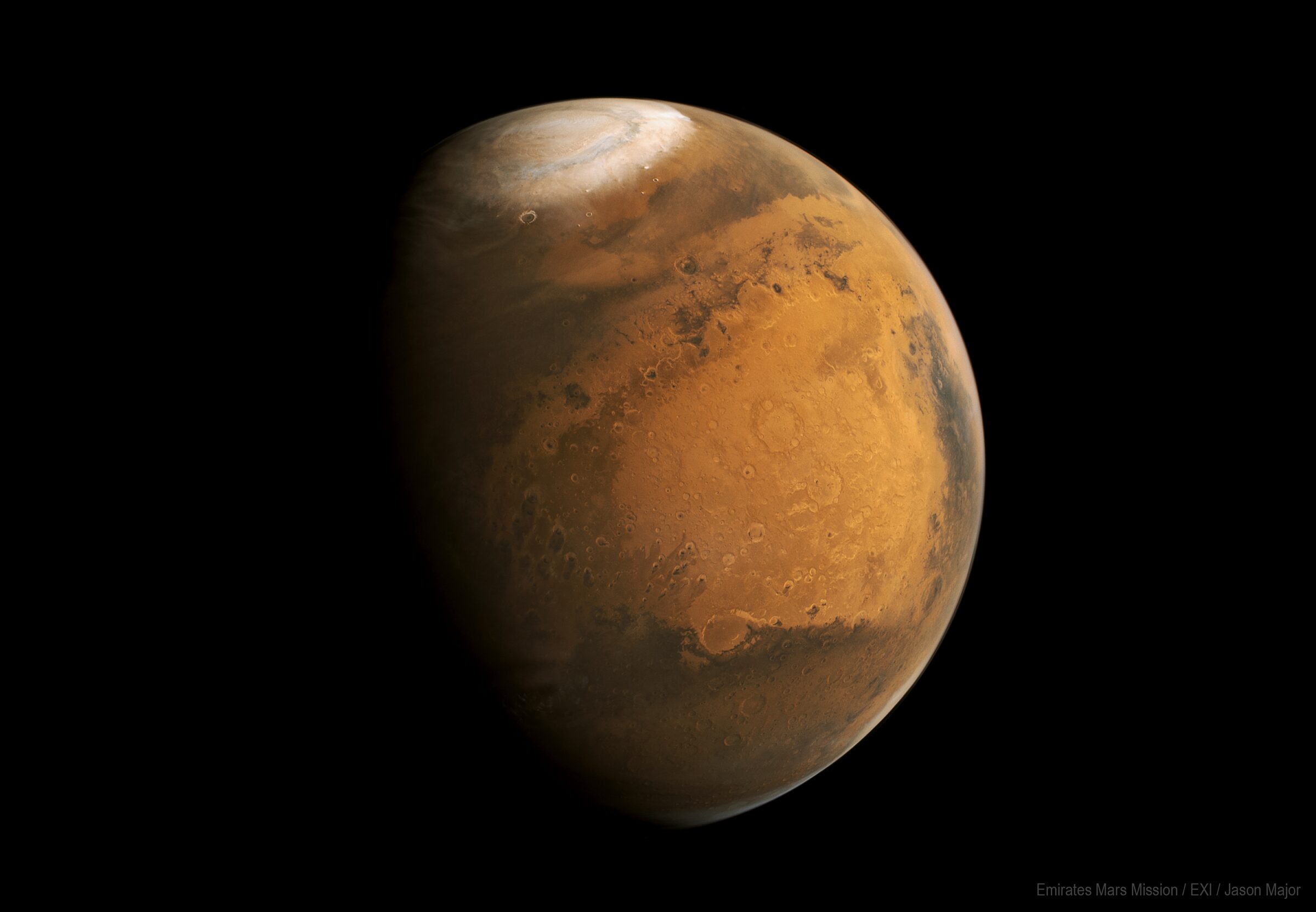Hope, the United Arab Emirates' Mars mission
Highlights
- Hope is a United Arab Emirates Mars orbiter that arrived in February 2021.
- Hope is studying Mars' climate to help us understand what Mars was like when its atmosphere could have supported life.
- Hope is the Arab world's first mission to another planet. More countries exploring our Solar System means more discoveries and opportunities for global collaboration.
What happened to Mars' atmosphere?
Mars is a cold, dry, desert, with a carbon dioxide-filled atmosphere 100 times thinner than Earth’s. But it wasn’t always like that. We know liquid water once flowed on its surface, supported by an atmosphere that may have been favorable to life.
But then something happened. About three billion years ago—right around the time life arose on Earth—Mars lost its magnetic field. On Earth, our magnetic field shields us from the solar wind, the constant stream of charged particles coming from the Sun. Without a magnetic field for protection, the solar wind stripped away much of Mars’ atmosphere, eventually transforming the planet into its current state. NASA's MAVEN spacecraft, which is still at Mars, made these findings.
How is Hope studying Mars' atmosphere?
Hope is building a complete picture of the Martian atmosphere and study how Mars’ climate changes over time. This will give scientists deeper insight into ancient Mars and whether the planet could have once supported life. It will also help us understand how our own planet’s climate is changing, and what the consequences of those changes are.
Hope also demonstrates the promise and importance of international space exploration. The mission is managed by the United Arab Emirates, with participation from scientists and engineers at U.S. universities. Japan launched the spacecraft. Space exploration brings us all together, and when more nations participate and collaborate, everyone wins.

When did Hope launch and when did it arrive at Mars?
Hope launched 19 July 2020 amidst the added challenge of the global COVID-19 pandemic. It arrived in February 2021.
How Hope studies Mars' atmosphere
Hope will build on MAVEN's work by studying Mars from a much higher orbit: 22,000 by 44,000 kilometers instead of 4,500 by 150 kilometers. (MAVEN is one of multiple Mars missions that have orbits optimal for relaying communications between Mars rovers on the surface and Earth.)
From its high perch, Hope will study Mars’ upper atmosphere, watching traces of hydrogen and oxygen—remnants from Mars’ wetter days—leak into space. The spacecraft will also study how the planet’s upper and lower atmospheres interact with each other. A high-resolution digital camera will capture stunning pictures of the planet.
Hope’s primary science mission was scheduled to last for two years. The mission has been extended to include studies of the Martian moon Deimos.
Hope - UAE's First Mars Mission How did Mars change to the cold, dry desert-world it is today? See how the UAE's first Mars mission, Hope, plans to explore the red planet.
Support missions like Hope
Whether it's advocating, teaching, inspiring, or learning, you can do something for space, right now. Let's get to work.


 Explore Worlds
Explore Worlds Find Life
Find Life Defend Earth
Defend Earth


